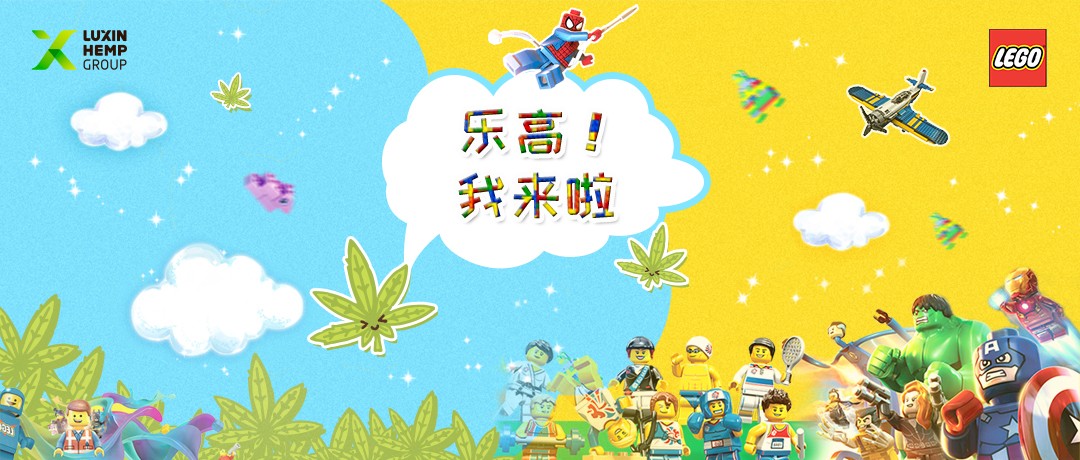
LEGO is a toy manufacturing company founded in 1932, with 86 years of operating history. The trademark "LEGO" comes from the Danish word "LEg GOdt", literally meaning "play well". Lego plastic bricks have bumps on one end and holes on the other for insertion of bumps. There are more than 1,300 shapes of bricks and each shape has 12 different colors, mainly red, yellow, blue, white and green. The Lego bricks are highly malleable, that permits players to create limitless varieties of structures at will. Lego is thus called "Magic Plastic Building Bricks", which quickly becames a high-end educational toy and achieved global popularity.
However, according to Plastics News, Lego bricks consume more than 6,000 tons of non-degradable plastics annually. To remedy this, industrial hemp has become a cost-effective and ecologically sustainable alternative that Lego is seeking. It is estimated that by 2030, the annual production of 60 billion LEGO bricks will be fully made from industrial hemp.

LEGO to replace plastic with hemp
To date, Lego has maintained its honor as plastic-based toy empire status for 57-year, but now the Danish toy giant is investing millions of dollars to get rid of this plastic. According to Plastics News, Lego currently uses a plastic resin (acrylonitrile, butadiene, styrene), but by 2030, a greener and more economical material – industrial hemp will be substitute to make children's favorite building bricks.
It is estimated that by 2030, the annual production of 60 billion LEGO bricks will be made from industrial hemp. Allan Rasmussen, Project Manager at LEGO, said that the new material should be able to form bricks indistinguishable from the plastic-made bricks. “We need to find a material as good as this one and equally good even after 50 years. Lego bricks are passed down from generation to generation,” Rasmussen said.
LEGO to replace plastic with hemp
To date, Lego has maintained its honor as plastic-based toy empire status for 57-year, but now the Danish toy giant is investing millions of dollars to get rid of this plastic. According to Plastics News, Lego currently uses a plastic resin (acrylonitrile, butadiene, styrene), but by 2030, a greener and more economical material – industrial hemp will be substitute to make children's favorite building bricks.
It is estimated that by 2030, the annual production of 60 billion LEGO bricks will be made from industrial hemp. Allan Rasmussen, Project Manager at LEGO, said that the new material should be able to form bricks indistinguishable from the plastic-made bricks. “We need to find a material as good as this one and equally good even after 50 years. Lego bricks are passed down from generation to generation,” Rasmussen said.
In fact, industrial hemp is an ideal raw material for manufacturing plastics due to its high cellulose content, ranged from 70% and 80% depending on the type of hemp plant. Materials made from industrial hemp are injected or blow-molded in countless products, including buttons, straws, home furniture, frisbees, and even toy bricks. Furthermore, industrial hemp is cost-effective and biodegradable, unlike the petroleum-based counterpart. As estimated, a bottle of standard petroleum plastic water has a biodegradation cycle of 450-1,000 years.
For several generations, the ban on hemp hast to certain extent eliminated the potential of industrial hemp from industrial production, but political attitude towards the hemp has been changing slowly recently. Industrial hemp plastics, resins and biocomposites possess infinite application prosperity and almost any shape and use can be materialized with bio-composite plastics. The full potential of industrial hemp is beginning to be revealed.